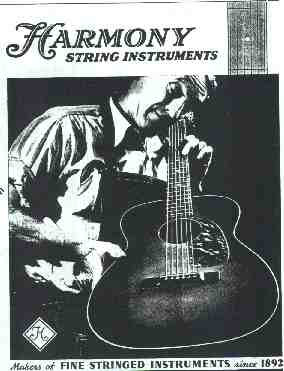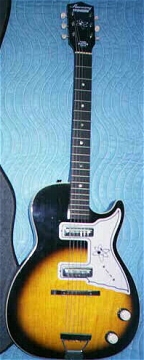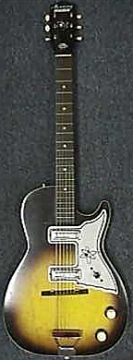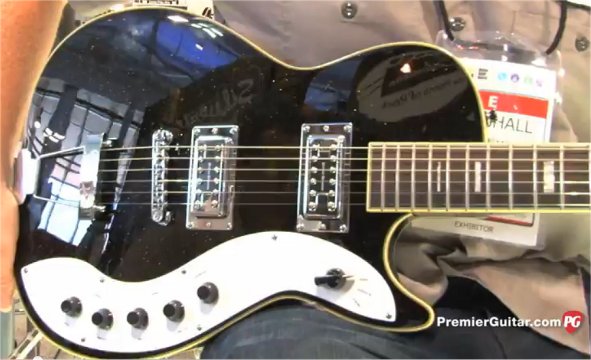
BILL AND SUE-ON HILLMAN: A 50-YEAR MUSICAL ODYSSEY
www.hillmanweb.com/book
Presents
Hillman Guitar No. 2
Silvertone
Sears made by Harmony
www.hillmanweb.com/guitars/g02.html
.
Yahoo! A hot summer day in Strathclair, 1960. I took a walk over to the hardware store that Dad managed (a new career to offset last year's disaster when our crop was hailed out) to take a lunch break from my summer painting job. A parcel from Simpson-Sears mail order had just been delivered -- my first electric guitar . . . and amp: a Sears Silvertone made by Harmony. It was a gift from my Nannie Campbell - the first of numerous guitars she would help me acquire.Sitting in the family 1960 blue Pontiac in the lane behind the store, I tore open the box. It was a beaut! . . . shiny black finish with metallic speckles and white trim. And that neck and fingerboard! The strings lay almost against the frets . . . no effort to play. I remember that the first thing I played on it was a low string "Honky Tonk" blues riff I had learned from a kid at Air Cadet Camp in St. Jean, Quebec, earlier that summer. This is a day I will never forget . . . I still have the box it came in.
Now I could join in the family jams and be heard. At about this time my mom and uncle were talking about getting together with members of the Christie family for a Campbell-Christie Orchesta reunion. This reunion in the Municipal Hall where they had played many times back in the '30s, turned out to be my first appearance on stage with a guitar. Now I was ready to ditch those piano lessons.
I've learned since that many other guitarists who went on to major careers also had a similar experience with this model. It is a popular vintage guitar now in rock and country videos . . . Neil Young . . . Bryan Adams . . . and many others have paid tribute to it on stage and in interviews. I remember once a few years after this when my Gretsch had been stolen, my rhythm player offered to lend me his Strat for a major show . . . but I just couldn't get used to the feel of it and decided to use my old friend, Silvertone, instead.
This was the guitar I took with me to Brandon College in the fall of '61 . . . a real companion for a homesick farm kid away from home for the first time.


















